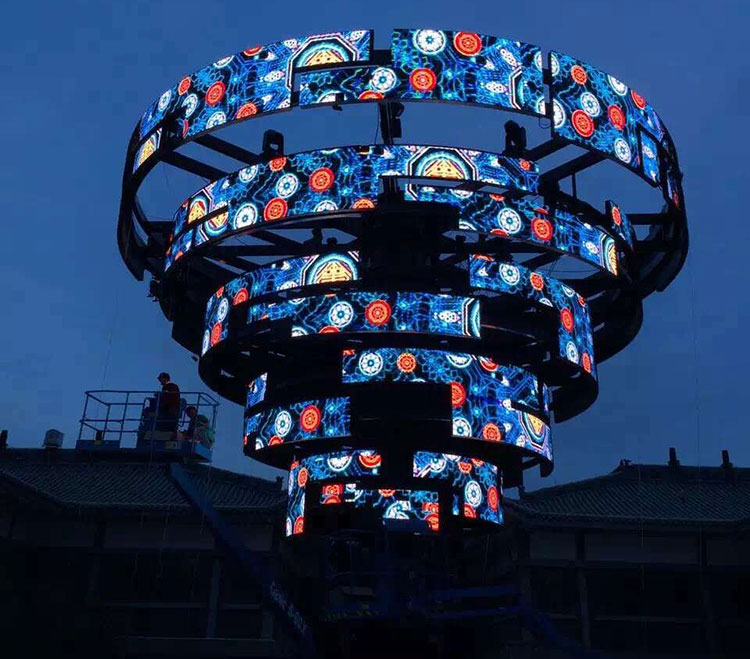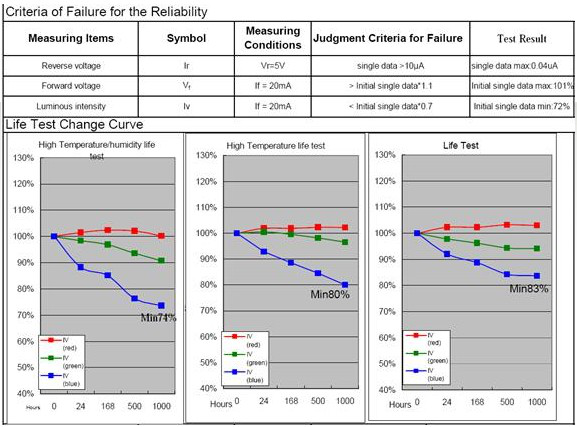+86 135 3053 5995
sales@mydled.comWe use our own and third-party cookies to ensure the proper functioning of the web portal and its complements, perform navigation analysis and show multimedia content. If you continue browsing, you accept the use of this technology. For more information please see our Cookies Policy. Learn more
This paper combines domestic and foreign LED display technology, focusing on the development of related indicators and key technologies that affect the display effect of LED displays.
3. Improvement of uniformity technology for LED display
The LED display is composed of millions of and tens millions of LED pixels. Due to the discreteness of the light emitting device itself, making the LED display screen produces uneven color chromaticity, which seriously affects the display effect of the display. Therefore, many LED display manufacturers use different methods to improve uniformity.

1) Screening method to LED light tube
In order to overcome the discreteness of the LED light emitting tube, the screening method was adopted in the early stage to make the brightness difference and color difference of the LED light emitting tube control within the range that the human eye can tolerate. This method causes the device cost of the LED display to double, and the display effect is not ideal.
2) Consistent correction technique
By precisely controlling the pixel's three primary color light emitting diodes, the brightness of the pixel and the color matching relationship of the three primary colors are controlled, so that the brightness and chromaticity of all the pixels of the LED display are kept consistent. This technology can completely solve the brightness and chromaticity unevenness of the LED display to make the display effect of the LED display by a qualitative leap.
3) Uniformity correction method to LED display in use
The uniformity correction is summarized as: factory calibration, maintenance calibration, service area calibration, and spot-calibrated. From the current market demand analysis, the necessity of spot-calibrated is becoming more and more prominent.
In general, when the LED display is running for a certain period of time, all LEDs will have brightness decay, and the attenuation curves of the tricolor tube will be inconsistent. Therefore, their brightness will be lower than the brightness before leaving the factory. However, the difference in the photoelectric characteristics of each LED tube causes a deviation in the degree of decrease in their brightness. Therefore, when the display screen is used for a period of time, the brightness of the light emitting tube will be different, so that the display is uneven between the pixels, so that the entire image will have a granular display state compared with the LED screen when the leaving factory, or the brightness is reduced. Inconsistent attenuation curves of the three primary color tubes cause changes in white balance, color temperature.
In fact, due to the attenuation of the LED light emitting tube and other changing factors such as the ambient temperature, it is almost inevitable that the excellent display performance of the LED display panel deteriorates. It is unachievable to disassemble the installed LED display back to the factory for calibration. In view of these features, display manufacturers must perform spot's calibration to ensure that they remain the display effect at the factory for the entire life. Several methods to spot's calibration:
A. Correction method based on LED running time
This is an early spot's calibration method that performs spot's calibration of the display based on tracking and recording the run time of each LED module. By roughly calculating the operating time of each LED, measuring their respective average luminance attenuations, different correction levels are estimated and then sent to the individual LED modules for corresponding adjustments. This method does not require any manual input. However, this method ignores a very important problem which the LED attenuation frequency estimated by the running time is not suitable for each LED. As the run time increases, the magnitude of the attenuation frequency of the LED is also larger and larger, and the correction made on an average basis causes a part of the LED to approach the correction level, but makes the other part of the LED more deviated. Since the brightness levels of the modules are different, and there is no effective way to adjust the modules whose brightness is not matched. Therefore, a series of problems will occur when the uniformity is adjusted between modules with different running times. And the most important is this method does not achieve calibration between pixels. So people feel a mosaic phenomenon of the overall LED display after this correction, which can not improve the uniformity of the LED display in the later use.

Brightness changing curve for SMD tricolor with working time
B. Correction method based on spot site
In order to completely improve the display uniformity of the LED display, it is necessary to use a special acquisition device to quickly and accurately collect the light color information of each pixel of the LED display on the spot, and compensate the actual attenuation degree of each LED light emitting tube through the relevant algorithm, to achieve a real sense of consistency correction, even achieve for pixel level calibrations of LED modules running at different times. The LED display recover to the uniform display affect of LED display when leaving the factory after correction.
The on site environment and the factory environment are very different. There are still many technical problems to be solved to quickly and accurately collect and correct the light color information of millions of LED light-emitting tubes on the LED display and the maintenance of the LED display in the future.